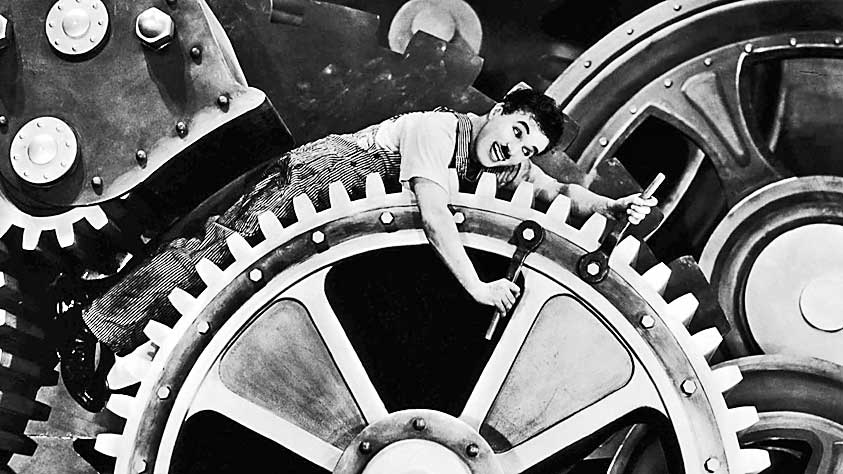
Modern masterpiece : he relevance of Chaplin's 'Modern Times'
 |
| A still from 'Modern Times'. |
Modern Times, however, is different from any of these works. It is unique in that it uses comedy to present tragedy. Sophocles’s Antigone or Ingmar Bergman’s The Seventh Seal uses tragedy to depict the tragic reality of human existence. Despite the dramatic elements, the homogeneity between content and form makes their formula straightforward. However, there is a disparity between content and form in Modern Times. Comedy, a positive form, is used to present harmful content. This use is as difficult as squaring a circle. It requires a deep understanding of tragedy and mastery over comedy and the ability to use comedy to present tragedy. Chaplin accomplishes this challenging task brilliantly.
According to the opening title, the film narrates a “story of industry, of individual enterprise — humanity crusading in the pursuit of happiness.” The machine is projected as the most outstanding achievement of human beings. However, Chaplin presents a contrasting picture of the devastating effects of industrialization on human beings. The brutal nature of the work at the factory leads to Chaplin’s character suffering a breakdown and being sent to an asylum. After his recovery and release from the hospital, he is arrested mistakenly and sent to jail. His presence at a mental asylum and a prison is, therefore, the direct consequence of working at the factory.
Interestingly, these symbols of tragedy are presented in the film not through scenes but through title cards. However, apart from a frame or two, Chaplin does not allow the tragedy to spill over into the film. He tactfully conceals the visible elements of tragedy, focusing on comedy instead. Following Foucault, asylum and prison are excluded from the film’s scenes: we get to know about them only from the title cards. Therefore, unlike in Desai’s films, there is no sequencing of the two contrasting rasas, tragedy and comedy, but their simultaneous use albeit at different levels. Chaplin handles this aspect of time pre-eminently. The tragedy is confined strictly to the titles, while comedy takes over the scenes in the movie. Unlike conventional tragedy or comedy, Modern Times deals with the dissimilarity between the two. The modern factory is a symbol of progress. At a surface level, the benefits of machines are attractive. However, the film narrates the invisible consequences of “humanities crusading in the[ir] pursuit of happiness”.

0 Response to "Modern masterpiece : he relevance of Chaplin's 'Modern Times'"
Post a Comment
Disclaimer Note:
The views expressed in the articles published here are solely those of the author and do not necessarily reflect the official policy, position, or perspective of Kalimpong News or KalimNews. Kalimpong News and KalimNews disclaim all liability for the published or posted articles, news, and information and assume no responsibility for the accuracy or validity of the content.
Kalimpong News is a non-profit online news platform managed by KalimNews and operated under the Kalimpong Press Club.
Comment Policy:
We encourage respectful and constructive discussions. Please ensure decency while commenting and register with your email ID to participate.
Note: only a member of this blog may post a comment.